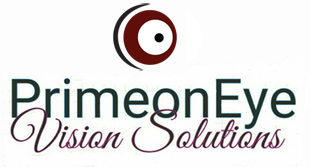Vitrectomy – Macular Hole Surgery
What is a vitrectomy?
Vitrectomy is a type of eye surgery that treats disorders of the retina and vitreous. The retina is the light tissue at the back of the eye. The vitreous is the clear jelly-like substance that fills middle of the eye.
The vitreous is removed during vitrectomy surgery and usually replaced by a saltwater solution.
When do you need a vitrectomy?
Your ophthalmologist (Eye M.D) may recommend vitrectomy surgery to treat the following eye problems:
- diabetic retinopathy.If bleeding and scar tissue is present
- some retinal detachments
- infection inside the eye
- severe eye injury
- macular pucker (wrinkling of the retina)
- macular hole (partial loss of vision for fine details)
- certain problems after cataract surgery
- floaters
How can a vitrectomy improve vision?
Vitrectomy surgery often improves or stabilizes vision. The operation removes any blood or debris (from infection or inflammation) that may be blocking or blurring light as it focuses on the retina.
Vitrectomy surgery removes scar tissue that can displace, wrinkle or tear the retina. Vision is poor if the retina is not in its normal position.
This surgery can also remove a foreign object stuck inside the eye as the result of an injury. Most foreign objects will damage vision if they are not removed.

What happens if you decide to have a vitrectomy surgery?
Before Surgery:
Your ophthalmologist will decide whether local or general anesthesia is best for you. You may have to stay overnight in the hospital. Before surgery you will need to have physical examination to alert your ophthalmologist to any special medical risks.
A patients ultrasound test may be performed before the surgery to view the inside of the eye.
After Surgery:
You can expect some discomfort after surgery you will need to wear an eye patch for a short time. Your ophthalmologist will prescribe eyedrops for you and advise you when to resume normal activity.
In your surgery requires a gas bubble to be placed in your eye your ophthalmologist may recommend that you keep your head in special positions until the gas bubble is gone.
Do not fly in an airplane or travel at high altitudes until ths gas bubble is gone! A rapid increase in altitude can cause a dangerous rise in eye pressure.
Vitrectomy Surgery:
The length of the operation varies from one to several hours depending on your condition in certain situations your ophthalmologist may do another surgical procedure at the same time such as repairing a detached retina or removing a cataract.
Your ophthalmologist performs the operation while looking into your eye with a microscope various miniature instruments are placed into the eye through tiny incisions in the sclera (white part of the eye).
In order to get the best possible vision for you your ophthalmologist will do one or more of the following:
- remove all cloudy vitreous
- remove any scar tissue present, attempting to return the retina to its normal position
- remove any foreign object that might be in the eye
- treat the eye with a laser to reduce future bleeding or to fix a tear in the retina
- place an air gas bubble in the eye to help the retina remain in its proper position (the bubble will slowly disappear on its own).
- place silicone oil in the eye, which usually requires later surgical removal.
What are the risks of vitrectomy surgery?
All types of surgery have certain risks but in vitrectomy are less than the expected benefits to your vision.
Some of the risks of vitrectomy include:
- infection
- bleeding
- retina detachment
- poor vision
- high pressure in the eye
How much will your vision improve?
Your vision after surgery will depend on many variables, especially if your eye disease caused permanent damage to your retina before the vitrectomy. Your ophthalmologist will discuss your situation with you to explain how much improvement in your eyesight is possible.
Lens Replacement : CLE – Clear Lens Extraction
Refractive Correction
- Myopia – Nearsightedness or short sightedness
- Hyperopia – Long sightedness or farsightedness
- Astigmatism
Lens replacement surgery involves replacing the eyes natural lens with an artificial lens so that vision is improved.
This is an alternative treatment to laser eye surgery particularly for high refractive errors such as extreme near sightedness and extreme far sightedness.
Lens replacement surgery is based on cataract surgery but is called clear lens extraction/clear lens exchange (CLE) because the eyes natural lens is not cloudy from cataract when it is removed and replaced. In CLE a none-cloudy natural lens is removed and replaced with an artificial one. The principals of lens removal are however, the same as cataract surgery. Once you have had lens replacement surgery you will never require cataract surgery because the natural lens is replaced and an artificial lens cannot become cloudy in the same way that a natural lens can.
Lens replacement surgery is also termed RLR (Refractive Lens Replacement) and RLE (Refractive Lens Exchange). If you are presbyopic, by exchanging your own natural lens for a multi-focal lens implant, both eyes can regain their ability to focus at all distances. This surgery is known as PRELEX (Presbyopic Lens Exchange).
Refractive Lens Surgery
In refractive lens exchange (RLE) eye surgery, your eye’s natural lens is replaced with an artificial one to achieve sharper focus. The procedure for refractive lens exchange is identical to cataract surgery.
People who are middle-aged or older may have the beginnings of cataracts that eventually could worsen and cloud the eye’s natural lens. In time, these cataracts could become advanced enough to require cataract surgery and replacement of the eye’s clouded lens with an artificial or intraocular lens.
If you have early cataracts, you could choose to have a refractive lens exchange instead of waiting for the cataracts to advance enough to require cataract surgery. Artificial (intraocular) lenses likely can provide significantly better uncorrected vision at that point, especially if you now require vision correction with glasses or contact lenses.
A major appeal of RLE is represented in newer accommodating or multifocal intraocular lenses, traditionally used in cataract surgery, with their ability to restore distance vision as well as improve near vision that enables functions such as computer use and reading for aging eyes.
Presbyopia affects all of us beginning at around age 40, when our eye’s natural lens grows more rigid and we lose the ability to focus at all distances (accommodation). If a traditional intraocular lens is used, distance vision can be corrected, but reading glasses would be needed. If a presbyopia-correcting IOL is used, reading glasses may be needed infrequently. While refractive lens exchange is relatively safe, you do need to consider that any surgery has risks that should be discussed in detail with the surgeon.
The chances of a retinal detachment are slightly higher in people who have undergone refractive lens exchange, compared with the general population. Otherwise, risks are similar to what people undergoing cataract surgery would face.
The technology of lenses that are placed in the eye, has grown dramatically, offering high quality lenses. Previously, the lenses potency was limited to correct only myopia or hyperopia. In recent years the ability of lenses to correct astigmatism and presbyopia has grown fast.
The greatest difficulty in its application is to find a suitable solution tailored to the patient. Each patient must be informed of concepts such as monovision, multifocal lenses etc. The detailed information of the patient is the beginning of a successful result.
Consult us for more advice and help.
